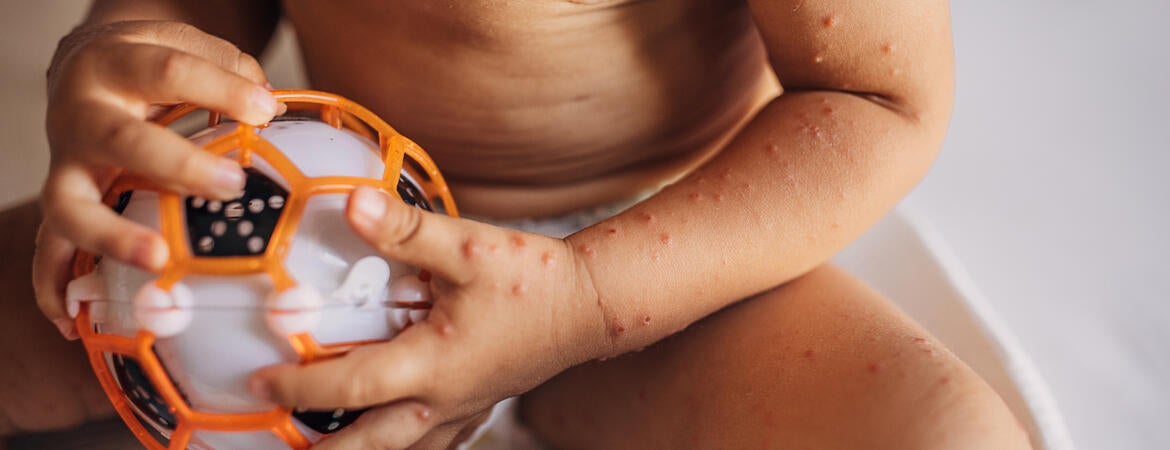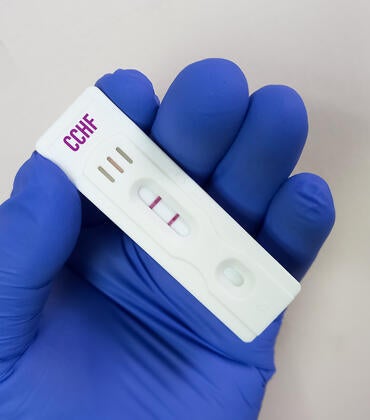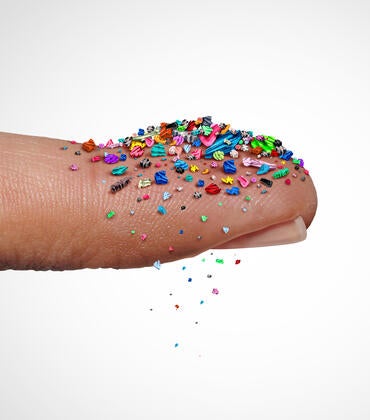
Hand, Foot, and Mouth Disease (HFMD) is a viral infection usually seen in children under 5 years old, although adults can catch it, too. Outbreaks have been identified across the country since late August. While the illness is often mild, it is highly contagious. Symptoms can include a fever, rash on the hands and feet, painful sores in the mouth, and a sore throat.
Dr. E. Caroline McGowan, a board-certified pediatrician with UCR Health who sees patients at the UCR Health La Quinta Pediatrics Clinic and an assistant clinical professor of pediatrics at the UC Riverside School of Medicine, shares information on the illness and what parents ought to know.
Q: Hand, Foot, and Mouth Disease sounds very ominous. How serious is it?
It does sound very ominous, but Hand, Foot, and Mouth Disease is usually a mild illness, and most children recover very well. It is caused by common viruses, typically strains of enteroviruses such as coxsackievirus A16, enterovirus, or echovirus, that lead to cold-like symptoms including fever, mild runny nose, cough, irritability, and the classic rash or small blisters that can appear on the palms, soles, and in or around the mouth.
For most healthy children, no specific treatment is needed beyond supportive care such as rest, fluids, and medications like acetaminophen (Tylenol) or ibuprofen (Motrin) to ease discomfort.
Serious complications from HFMD are very rare, but parents should know the warning signs. These include extreme or unusual weakness, being difficult to wake or sleeping far more than expected for a typical illness, trouble breathing, pale or mottled skin, or a persistently fast heart rate. If any of these symptoms appear, the child should be evaluated by a healthcare professional right away. While most children recover fully within a few days, it’s always appropriate to reach out to your pediatrician if you have concerns or if symptoms seem to be worsening
Q: What are the symptoms of HFMD? How is it treated?
Symptoms usually start with mild cold-like signs, runny nose, low-grade fever, and irritability, followed by the classic rash. These rashes often appear as tiny blisters in and around the mouth, on the hands and palms, on the feet and soles, and sometimes in the diaper area. While the cold symptoms can be managed much like any other viral illness, for example with a cool-mist humidifier for congestion, warm honey, or honey tea for children over one year of age, and Tylenol or Motrin for fever, the mouth sores tend to be the most uncomfortable part. They can make children refuse food or fluids, which is when complications like dehydration can develop.
Keeping children well hydrated becomes the most important part of treatment. Use Tylenol or Motrin to ease discomfort and encourage frequent small sips of water or Pedialyte—even a few swallows every few minutes can make a big difference. Cold, soft foods often feel soothing, so Pedialyte popsicles, cold yogurt, smoothies, or chilled purees can be easier for kids to tolerate. Some children also experience tenderness on their palms or soles from the rash; while pain medicine typically helps, a child who refuses to bear weight or walk because of pain should be evaluated by a pediatrician.
It’s worth noting that symptoms vary widely. Many children have mild illness with a rash that lasts about 7-10 days, while others develop more extensive rashes that can take 2-3 weeks to fully resolve. HFMD is most common in children under 5, but older kids and adults can catch it as well.
Q: How is HFMD spread and what is the risk of contracting it? How can its spread be prevented?
HFMD spreads easily through close person-to-person contact. The viruses that cause HFMD live in respiratory droplets (like saliva and mucus), stool (especially during diaper changes), and the fluid inside the small blisters that appear on the skin.
Parents, daycare workers, teachers, and caregivers can reduce spread by disinfecting toys and common play areas daily, encouraging frequent handwashing, and avoiding shared cups and utensils. Still, as you can imagine, it’s challenging to fully control transmission among young children who drool, explore the world by putting objects in their mouths, and aren’t yet great at hand hygiene. The virus can also be shed in the stool for several weeks after symptoms begin, which contributes to lingering contamination and daycare outbreaks.
According to the American Academy of Pediatrics, children with HFMD do not need to stay home until all rashes or blisters are gone. They may return to school or childcare once they have been fever-free for 24 hours without medication, are comfortable enough to participate in their usual activities, and are not drooling excessively from painful mouth sores.
Mild lingering symptoms — such as a healing rash, a mild cough, or small dry blisters — are not reasons to exclude a child. HFMD is most contagious before the classic rash appears, which means keeping children home until every lesion has healed does not meaningfully prevent spread. Most children recover quickly and can safely return to their usual routines once their fever and discomfort have resolved.
Q: There have been HFMD outbreaks across parts of the country. Why is this flourishing now? Are we seeing it in the Inland Empire?
Yes, we are seeing increased cases both across the country and here in the Inland Empire, but this isn’t entirely surprising. HFMD tends to follow seasonal patterns, with peak activity in late spring, late summer, and early fall. Increased public awareness and reporting can make the numbers feel more alarming, but HFMD is a very common childhood illness, and seasonal spikes are expected.
Because it is so contagious, outbreaks can occur easily — children can pick it up at daycare, the playground, or even from touching a shopping cart. For most healthy children, these exposures ultimately help build their immune system over time. That said, I always emphasize that this is not a disease parents should intentionally expose their children to; prevention and good hygiene practices are still very important.
Header image credit: South_agency/Getty images.




